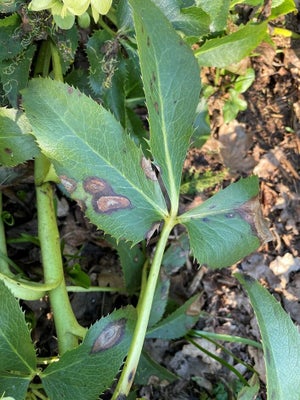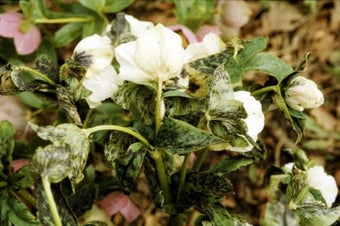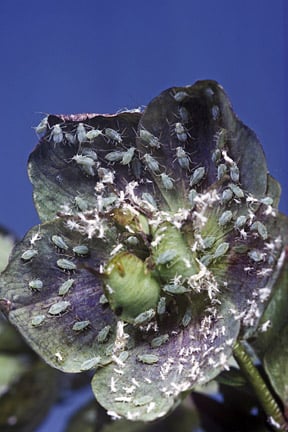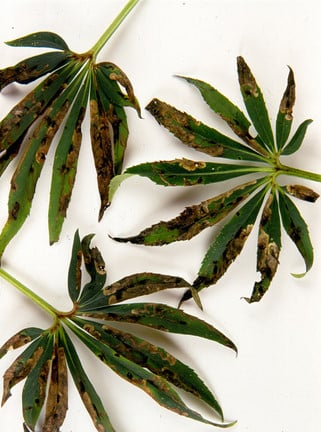
Quick facts
Common name - Hellebore leaf spot
Scientific name - Microsphaeropsis hellebori (syn. Coniothyrium hellebori)
Plants affected - Helleborus spp.
Main symptoms - Brown patches on leaves and stems
Caused by - Fungus
Timing - Spring through to Autumn
What is hellebore leaf spot?
Hellebore leaf spot is caused by the fungus Microsphaeropsis hellebori. You are most likely to see infections when new plant growth is occurring from late winter until summer.
The disease affects most Helleborus species and hybrids. Helleborus niger can be particularly badly affected by leaf spot.
Symptoms
You may see the following symptoms:
- On leaves: Infections cause more-or-less round, dead, brown patches on leaves and stems. Later, the dead leaf tissue may fall out, leading to a ragged appearance
- On stems: Infections on the stems may cause them to collapse
- On flowers: Dark spots and blotches can also develop on the flowers
- Tiny, black fruiting structures of the fungus may be visible in the dead plant tissue
- Heavy infection in early spring can lead to widespread blackening of leaves and stems that could be mistaken for damage from adverse weather conditions

Control
The RHS believes that avoiding pests, diseases and weeds by good practice in cultivation methods, selection, and encouraging or introducing natural enemies, should be the first line of control. If chemical controls are used, they should be used only in a minimal and highly targeted manner.
Non-chemical control
- Remove any leaves affected by leaf spot promptly and dispose of them
- Do not allow dead, infected material to remain around the plants, since this will be a source of infection in the following season
- Hybrid Lenten roses (Helleborus x hybridus) and a few other hellebores carry their flowers on separate stems to the leaves. With these types, all the old leaves can be removed in winter or early spring, before flowering starts. This won't affect the vigour of the plants and reduces the risk of any leaf spot spreading to the new growth. It can also improve the overall flowering display as its impact isn't reduced by the presence of old, tatty leaves
- Some hellebore species (e.g. H. argutifolius, H. niger) carry their flowers and leaves on the same stems. With these types, any action before flowering should be confined to picking off leaves affected by leaf spot. See our profile on growing hellebores for more information on how to treat the different types
Fungicides
The RHS recommends that you don't use fungicides. Fungicides (including organic types) may reduce , impact soil health and have wider adverse environmental effects. If you do intend to use a fungicide, please read the information given in the link and download below to ensure that use, storage and disposal of the product is done in a responsible and legally compliant manner.
The products listed in the ‘Fungicides for gardeners’ document below are legally available for use by home gardeners in the UK. This information is provided to avoid misuse of legal products and the use of unauthorised and untested products, which potentially has more serious consequences for the environment and wildlife than when products are used legally. Homemade products are not recommended as they are unregulated and usually untested.
There is no specific information available on the efficacy of any home garden fungicide against hellebore leaf spot.
Download
Fungicides for gardeners (Adobe Acrobat pdf document outlining fungicides available to gardeners)
Link
Biology
The fungus causing hellebore leaf spot produces minute spores from small black fruiting bodies that form in the dead, affected tissues. The spores are spread in water and wind-blown rain and thus wet conditions are required to initiate disease. The fungus perpetuates on the plant over the summer and autumn and a new round of infections is intiated at times when new plant growth is occurring.







